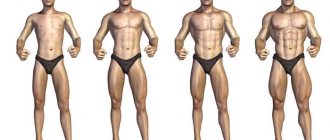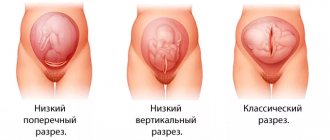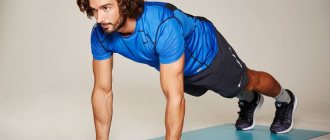Are you planning to start exercising again after giving birth? If you've just recently become a mother, you may not have the strength yet and don't know exactly how or when to start. In fact, there is no need to be afraid. Exercising after childbirth will energize you, lift your spirits and help you get back to your pre-pregnancy shape. Do you want to lose the weight you gained during pregnancy, get rid of your postpartum belly, or just do something enjoyable? Or maybe all together? Read our guide! In it we will tell you when you can start exercising after childbirth and what the benefits are, and we will also recommend the nine most effective exercises after childbirth.
When can you start exercising after giving birth?
Experts do not set clear deadlines for when you can start playing sports after giving birth. If you haven't had a caesarean section and your doctor says you're healthy, you can start exercising as soon as you feel ready. Some are ready for sports a couple of days after giving birth, some take longer to recover. If you had a caesarean section or had complications with your birth, recovery may take some time. Experts agree that after a cesarean section you can exercise in a gentle manner about four to six weeks after birth. It is best to ask your doctor which option is right for you.
What is absolutely forbidden to do?
- First of all, you should not regard the rehabilitation period as a reason to put yourself on a strict diet - a nursing mother needs good nutrition. Breast milk provides the baby with everything necessary for development and growth; nutrients are “removed” from the mother’s body. Cutting back on food in such a situation will only harm yourself. Teeth, hair, nails and skin are deprived of nourishment, health suffers, drowsiness and loss of strength appear. Hormonal changes accompanied by diet are guaranteed nervous breakdowns and postpartum depression. However, a balanced diet does not mean that you should eat “empty calories”. Floury and sweet foods are of no use to either mother or child.
- There is no need to rush into all seriousness without a doctor’s permission. Yes, childbirth and pregnancy are not a disease, but a heavy load, accompanied by hormonal changes and recovery. Additional stress and interference with the body's functioning is a cesarean section. Follow your doctor's recommendations and adhere to the recommended time frame.
- You can’t start with intense weight training and exhausting training programs. Crossfit and marathon running can wait. At first, light and regular loads are acceptable.
Restoration of the prenatal form occurs gradually, and in the case of a cesarean section, any stress requires careful adherence to medical recommendations and a rehabilitation period. In any case, everything depends only on the woman herself: for those who believe in themselves, there are no impossible goals!
– Elena Kichak
Benefits of exercising after childbirth
There are many benefits to regular exercise after childbirth, for example:
- improvement of well-being
- burst of energy
- weight loss
- improving aerobic endurance
- toned abs
- reducing symptoms of postpartum depression and anxiety
- improved sleep quality
- communication with other mothers (if you sign up for group training)
- an opportunity to be alone with yourself
There is another advantage: if you start playing sports regularly now, your baby will have a good example before his eyes in the future.
Breathing exercises for diastasis
Breathing exercises help retrain the diaphragm, or rather, return it to its normal position and functioning. During pregnancy, the growing uterus seems to push the diaphragm up and it loses the ability to return to its normal position. Since the diaphragm forms the upper part of the core muscles, it is important to retrain it and return it to its original position. Here are some good exercises:
- Lying on your back, with a pillow under your buttocks, raised slightly above chest level, you should take short, shallow breaths into your stomach. This exercise should be done for a minute.
- While sitting, you need to put your hands on your chest and take short and shallow breaths for a minute.
The distance between the two abdominal muscles is not the most important aspect. It is much more important that all the abdominal muscles can work together again, providing quality support to the spine.
The Nine Most Effective Exercises After Childbirth
It is recommended that you consult your doctor before starting to exercise after giving birth. Here are nine exercises you can do both immediately after giving birth and in the future.
Walking
Yes, this is the most common walking and at the same time a great way to return to sports. Start with a short daily walk at a brisk pace and increase the duration and distance as much as possible.
Walking outside is always pleasant, especially if the weather permits. Invite moms you know, friends or relatives for a walk. The baby will sleep soundly in the fresh air, and you can chat and spend quality time. In bad weather, you can go to the nearest museum or shopping center. And if you have a gym membership or a treadmill at home, you can practice walking on a machine while watching an episode of your favorite TV series.
Swimming
Another option for postpartum exercise is swimming. It provides sufficient aerobic exercise for the body after childbirth, but does not overload the joints.
If you like water, you might like to float back and forth in the pool and think about your own thoughts. You can also sign up for water aerobics classes designed specifically for women after childbirth.
But do not rush to dive into the water or do other exercises further on the list; first consult your doctor.
Exercises for the abdominal and back muscles
How to remove postpartum belly? This question worries many mothers. During pregnancy, the abdominal and lower back muscles become stretched. According to experts, abdominal exercises around six weeks after giving birth can help tighten and strengthen these muscle groups.
You can start with a simple exercise called “pelvic tightening.” To do this, you need to lie on your back and bend your knees. Tighten your abdominal muscles and pull your pelvis back and slightly up. Hold this position for 10 seconds, relax and repeat again. Increase the number of repetitions to 10–20 per day.
Below the illustration below you will find a detailed description of other useful postpartum exercises for the abdominal and back muscles.
Each next exercise is a little more difficult than the previous one (from A to E). First you need to master one exercise, increase the number of repetitions to 20, and then include the next one in the complex. A. On all fours.
Get on all fours so that your arms and legs are at right angles. Take a deep breath, and as you exhale, tighten your abdominal muscles.
B. Sliding with your feet.
Lying on your back, bend your knees slightly, press your feet to the floor and tighten your abs. Straighten one leg, sliding your foot along the floor, and return your leg to the starting position. Repeat the same with the other leg.
C. Bicycle.
Take the same position as in the previous exercise. Bend your leg at the knee and lift it so that your knee is higher than your hip. Then straighten your other leg. Make a movement as if you were riding a bicycle: straighten the bent leg and bend the one that was extended.
D. Heels touching the floor.
Lying on your back, lift both legs at a 90-degree angle so that your calves are parallel to the floor. Lower one leg to the floor so that your heel touches the floor and your knee remains bent. Repeat the same with the other leg. A more difficult option: touch the floor with both heels at the same time. During this exercise, you need to press your lower back to the floor, that is, while lowering your heels, try not to bend in your lower back. If you feel that your lower back is starting to lift off the floor, you do not need to try to make your heel touch the floor. Try to lower your heels as low as possible, but without arching your lower back.
E. Leg extension.
Lying on your back, lift both legs at a 90-degree angle so that your calves are parallel to the floor. Extend one leg straight so that your foot is 30–60 cm above the floor. Return your leg to the starting position and repeat the exercise with the other leg.
Gentle strength training
To quickly return to your prenatal form, you must include weight-bearing exercises in your training program. Once your doctor gives the OK, you can begin training the main muscle groups, particularly the back and abdomen, and then move on to higher-intensity exercises that will involve other muscle groups, such as the arms and legs.
Weight training strengthens muscles, boosts metabolism, promotes weight loss, and improves balance and coordination.
To get started, you can join a gym, do exercises using videos or apps, or even use the services of a personal trainer who can tell you how to remove postpartum belly fat. There are many types of resistance training: you can do exercises with your own weight or with dumbbells and resistance bands (though you need to purchase them separately).
If you had a C-section, your doctor will likely not allow you to lift anything heavier than the baby for the first six to eight weeks after giving birth.
Group classes for women after childbirth
Many gyms offer group training for postpartum women. Exercises can be anything from light aerobics and dancing to strength training. The main advantage of group training for first-time moms is that you will meet others with a shared experience.
See what programs are offered by health clubs or gyms in your area. Perhaps they have group classes specifically for new mothers. Talk to your doctor - most likely, he will recommend suitable group training sessions for you.
You can also sign up for any other group training. However, in this case you need to warn the coach that you have recently given birth.
Some fitness clubs have rooms for children. It is recommended to inquire about this in advance.
Postpartum yoga
The life of a young mother is often oversaturated with events, so as a sport after childbirth, you can choose something calmer, such as yoga. Special postpartum complexes reduce stress levels, strengthen muscles and improve flexibility.
Try finding postpartum yoga group classes in your area. By performing the exercises under the supervision of a qualified trainer, you can be sure that the poses offered to you will not harm your condition. And if you are uncomfortable, you can always ask your trainer to choose a lighter option. Connecting with other new mothers can also benefit you.
However, there is one pose that can be done at home - of course, with permission from your doctor. It's called "happy child's pose." This pose relaxes and stretches the pelvic muscles, which can be overstrained after childbirth. Lie on your back and bring your knees to your chest. Spread your knees apart, place your hands between your knees and grab the outside of your feet or ankles. Gently press down on your feet. Your feet should be parallel to the ceiling. The pose must be held for approximately 90 seconds.
Exercises for the pelvic floor muscles
Pelvic floor muscle exercises (Kegel exercises) strengthen the muscles in the pelvic and genital areas. Regular exercise also reduces the risk of urinary incontinence.
To perform these exercises correctly, tense your muscles as if you were trying to hold a stream of urine and hold this position for about 10 seconds. Experts recommend doing 10–20 of these exercises in three approaches throughout the day. You can do them anywhere and at any time, no additional equipment is required. And to find the muscles you need, look at the diagram and read our article on Kegel exercises.
Exercises with your child
In fact, you can play sports after childbirth with your child. Now you can find groups for fitness classes with your baby. This way you get a double benefit: under the guidance of a trainer, you perform the most effective exercises after childbirth, while your baby watches other mothers and their children in the gym.
You can play sports with your baby at home or in nature, for example in a park near your house.
Jogging
If walking at a fast pace is not enough for you, you can switch to jogging.
When your baby gets older, you can take him jogging with you. The main thing is to choose a suitable jogging stroller and ask your pediatrician whether you can take your child with you to training.
Recommendations from experts
In order not to harm the body with various abdominal exercises after cesarean section, it is necessary to carry out the training correctly. Even if the postoperative recovery period went well, the patient feels great, classes cannot be carried out more than 3 times a week. In addition to exercise, swimming, walking and cycling will help you cope with your tummy and strengthen your abs. Unlike the press, such exercises can be carried out after discharge, when the suture wound has healed.
Walking with a child in a kangaroo pouch has a beneficial effect on abdominal recovery. Only you need to put it on not from the front, as is customary, but from the back, like a backpack. This simple trick will help speed up the recovery process of abdominal muscle tissue.
You won't be able to get instant results. This will take time and regular training. Until the doctor gives permission to exercise, it is recommended to use a postpartum bandage, which will speed up the healing of the suture and help strengthen the abdominal and back muscles.
Sports after childbirth: what is important to consider
If you have already resumed training or are just planning to do so, do not forget that:
- Recovery after childbirth is a very individual process.
There is no one-size-fits-all approach to exercise after childbirth. It is necessary to take into account individual goals, personal preferences (for example, type of sport or group/single training), the presence of diseases or complications. You can't force yourself to get back into shape immediately. You should only resume exercise after childbirth when you are ready.
- There's no need to rush.
Follow your doctor's advice - he will tell you when you can play sports again. You'll probably be able to do the exercises for a couple of minutes at a time at first. Don't despair - you can gradually increase your moderate-intensity training to 20-30 minutes a day, five to six days a week, that is, up to 150 minutes a week. There is no need to set yourself the task of returning to your pre-pregnancy form as quickly as possible. Long-term goals are more important than quick results.
- You need to focus on your personal level of physical fitness.
You should also consider whether you exercised before and during pregnancy. For example, if you haven’t played sports before, now you need to approach this especially carefully and very slowly increase the duration or intensity of your training.
- You should like it.
Nobody wants to play sports under pressure. Choose the type of physical activity that you like and try to diversify your workouts. You can do exercises with your baby - for example, pumping up your abs while your baby is lying next to you on the floor. And also train with another young mother or friends you haven’t seen for a long time.
- Nursing mothers need to approach sports with extreme caution.
Drink plenty of water, eat healthy, and exercise at a moderate pace to avoid fatigue. It is recommended to feed your child before classes, and to wear a supportive bra during training so that there is no discomfort in the chest. If milk leaks, you can put absorbent pads in your bra.
- If you have recently had a caesarean section, you should not lift heavy objects.
It is best to consult a doctor. In general, experts advise not to lift anything heavier than the baby for the first six to eight months after birth.
- You need to drink enough water.
Keep track of the color of your urine - it should be pale yellow. If it is a deep yellow color, you should drink more water.
- You will need to arrange for someone to babysit your child while you exercise.
It’s difficult to find time for sports if you also have to take care of your baby. If you have no one to leave your child with during training, you can take him with you in a stroller for walks, do special exercises with him, or practice at home while he sleeps.
- You need to rest.
Any young mother needs to rest and get enough sleep, and if she also regularly plays sports, then doubly so. By the way, regular exercise improves sleep quality.
- It is better to set a specific time for training.
Mothers usually put family matters first, but we must not forget that exercise after childbirth is very important for health and well-being. It is recommended to set aside regular time for training so that you don’t forget about them in the hustle and bustle of things.
Causes of skin folds after cesarean section
The skin-fat apron spoils the mood of 80% of women who give birth through cesarean section. Many of them are perplexed where the overhanging fold came from, because before pregnancy they had a slim, toned figure . The main reason is that during pregnancy the female figure changes, physiologically this is expressed in the prolapse of the anterior abdominal wall and the divergence of the rectus abdominis muscles. Abdominal deformities can be caused by the following factors:
- extra pounds gained, which did not benefit the body growing in the womb, are deposited on the waist and hips;
- a shift in the center of gravity during gestation, the pregnant woman’s belly protrudes forward, and her posture deteriorates;
- stretching of the abdominal walls, impaired tone of the abdominal muscles.
When to see a doctor
The safest thing to do is ask your doctor if you can still exercise after giving birth. You should immediately stop training and consult a doctor if the following symptoms appear:
- painful sensations
- dizziness or nausea
- vaginal bleeding
- unusual shortness of breath (not caused by exercise)
- extreme fatigue
- other warning symptoms
How long does it take to get into prenatal shape?
Typically, after giving birth, women return to their pre-pregnancy weight within 6–12 months. The normal rate of loss of weight gained during pregnancy is about 450-900 grams per week. Ask your doctor what rate of weight loss is optimal for you. You shouldn't go on a strict diet: your body needs energy and nutrients to recover from pregnancy and childbirth. Listen to your body and be patient. You shouldn’t set yourself the task of getting back in shape by a certain time. You need to play sports when you enjoy it. Don't forget to eat properly and nutritiously - this will give you the energy to take care of yourself and your baby.
Reviews from women who have had a caesarean section
Natalya, 25 years old, economist, Moscow. I went for a caesarean section on my own, without any indication. The operation went very well, I was given spinal anesthesia, I saw and heard everything. There was no severe pain, there was discomfort and the milk came only on the third day. Now 3 months have passed since the operation, the stitch practically does not bother me, I followed all the instructions. In general, I don’t regret my decision one bit.
Olga, 28 years old, salesman, Voronezh. At the final gynecological examination, it turned out that I had a deformation of the pelvic bones. We decided to go for the operation, it went quickly. The anesthesia went well, I recovered from it for an hour and a half after the operation, and the child was born healthy. They brought me my daughter only on the 4th day, when I already felt almost healthy, could stand, walk, and even began to slowly breastfeed her. I survived all the problems, because the most important thing was that my daughter was completely healthy.
The rehabilitation period after cesarean section requires a lot of attention and effort. Because the woman’s future health and her ability to give birth again depend on how it goes. You should listen to all the doctor’s recommendations, don’t be shy to ask for help, don’t take on the entire burden of responsibility and responsibilities, and then everything will be fine.











